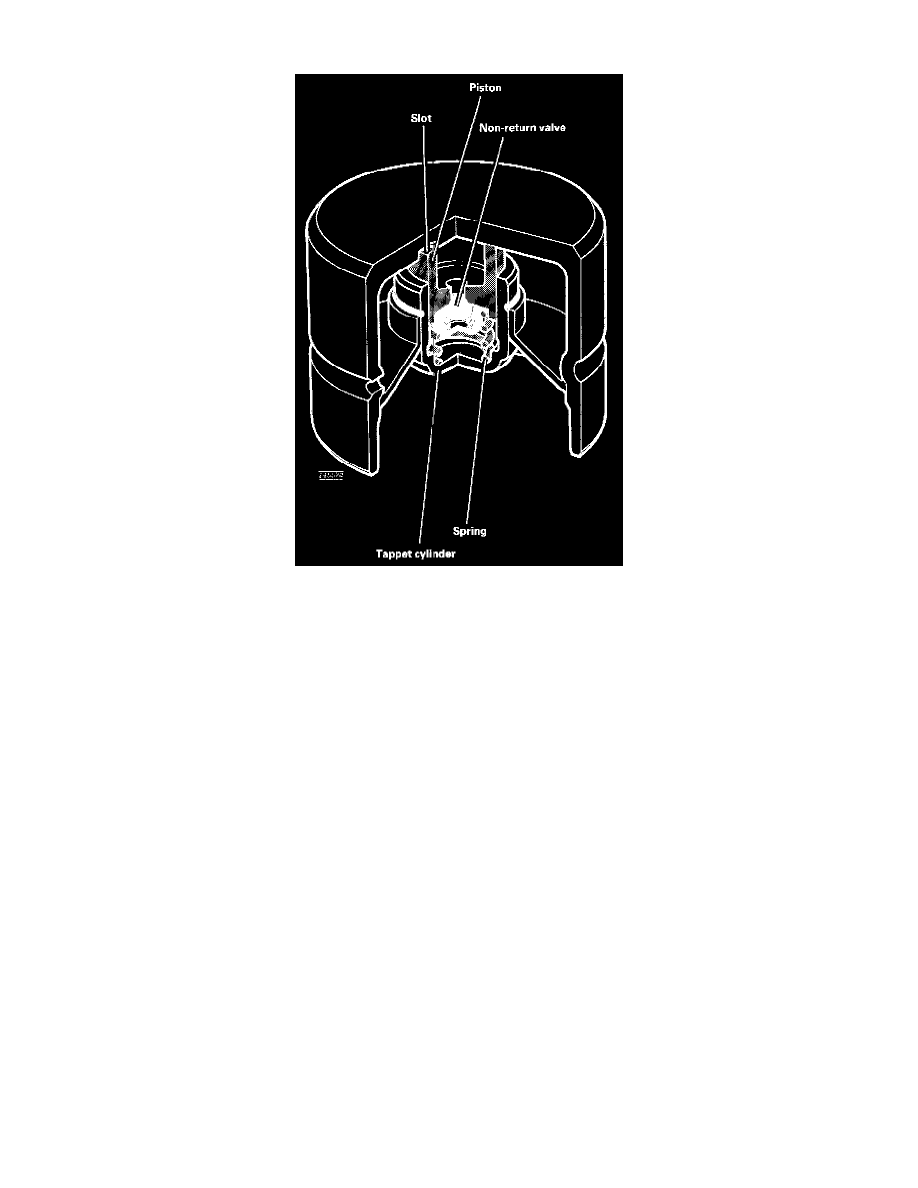940 L4-2320cc 2.3L DOHC VIN 89 B234F FI (1991)

Tappet, Valve: Description and Operation
Hydraulic tappets
The clearance normally provided between the cams and tappets in a conventional engine is greatest when the engine is cold, to compensate for linear
expansion of the valves when the unit is hot. A certain clearance is also required to ensure perfect seating of the valves, preventing the leakage of
combustion gases and eventual valve damage. Ideally, the clearance should be as close as possible to zero. The hydraulic tappet provides a means of
achieving this.
In the design used in the B 234 F, a spring in the tappet cylinder is used to maintain the tappet in contact with the camshaft. In this case, linear expansion
is accommodated by fitting a tappet spring with a lower force than the valve spring.
A non-return ball valve prevents the escape of oil when the camshaft is operating the tappet and the oil pressure in the tappet cylinder is higher than the
engine oil pressure. In time, oil may conceivably leak from the tappet cylinder when a valve remains open while the engine is stopped, causing excessive
clearance before the engine has been started and oil pressure raised. The clearance between the tappet cylinder and piston is accurately specified to meet
this contingency and to ensure mechanical reliability.
